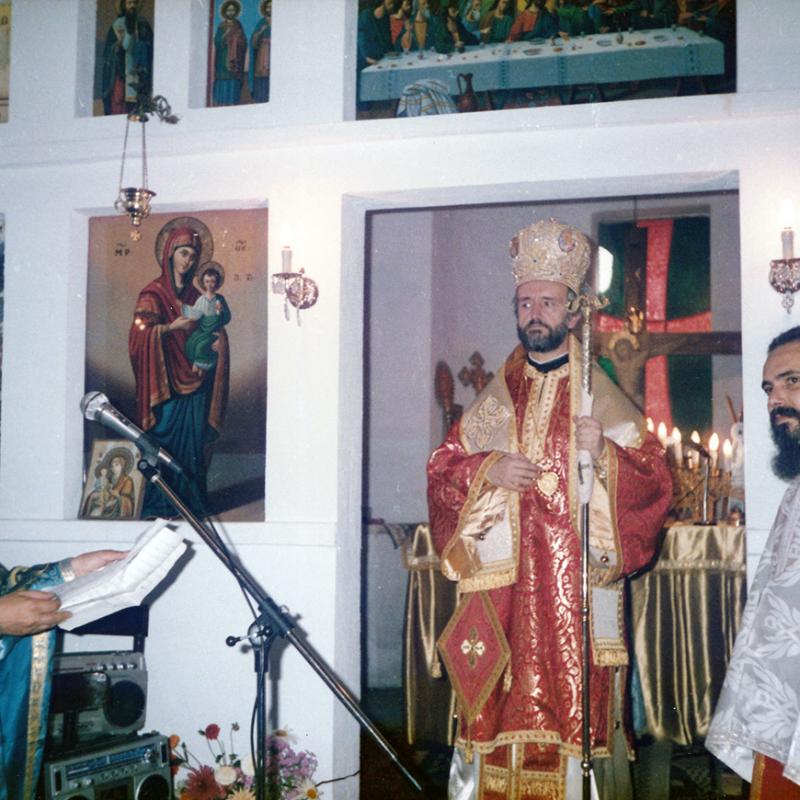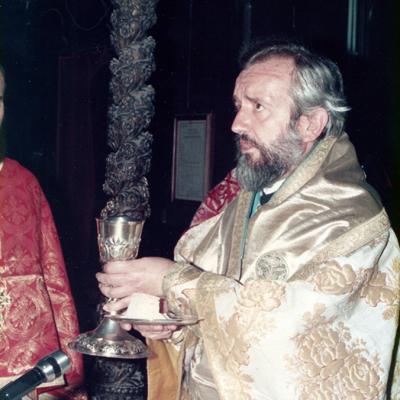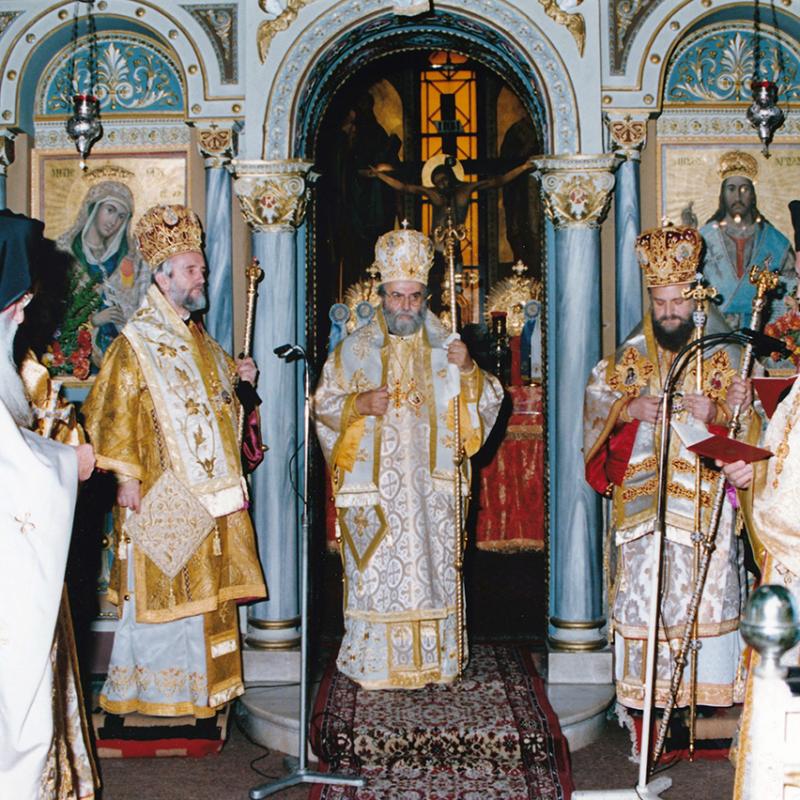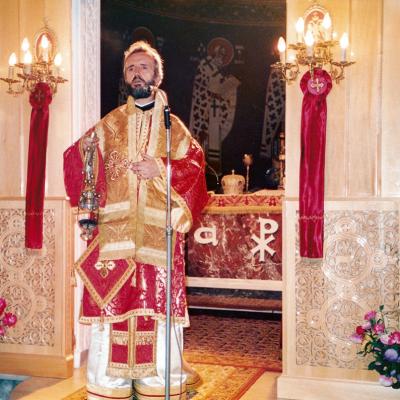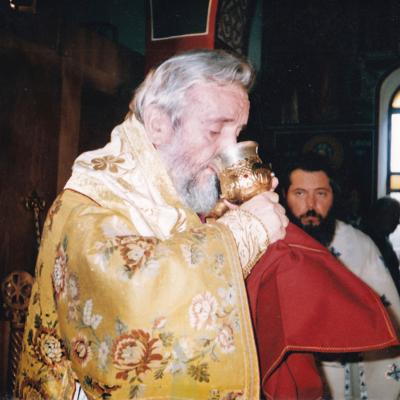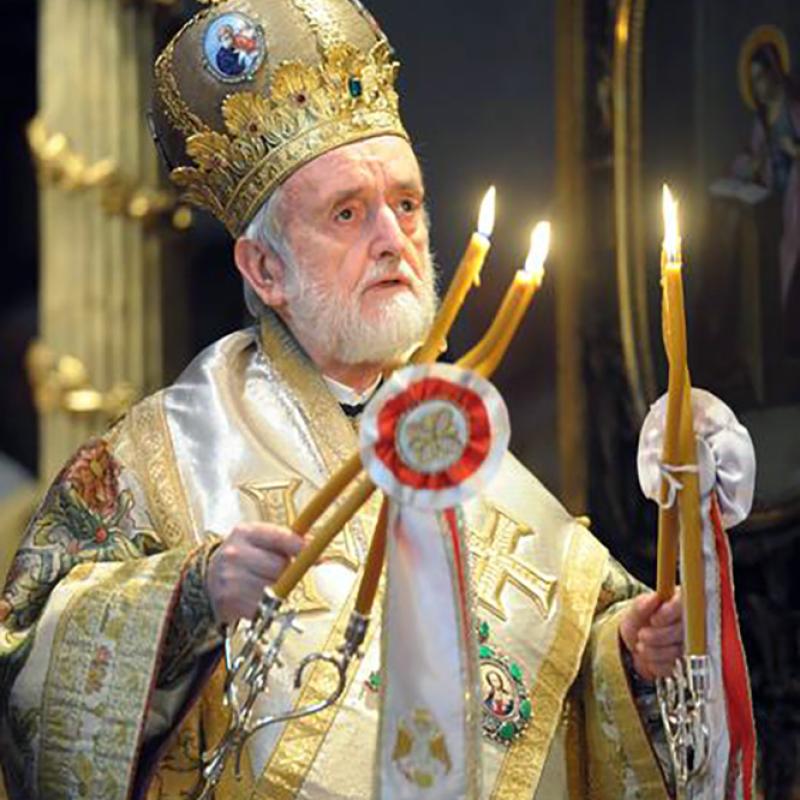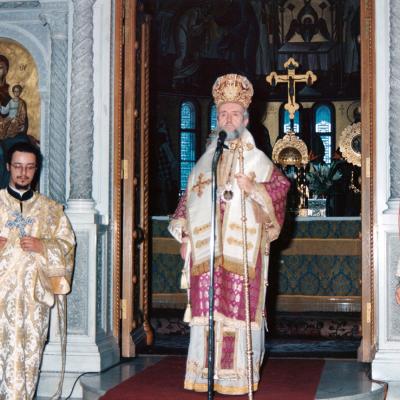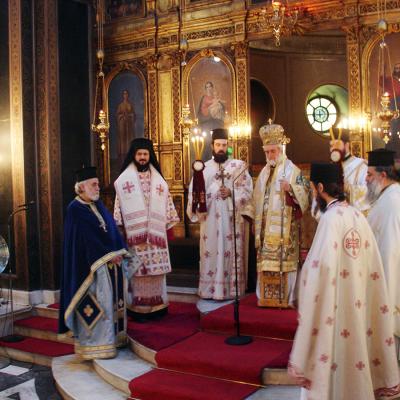Metropolitan John's theology was not just confined to academic discourse; he vividly brought it to life in his liturgical celebrations and homilies. For him, place, time, matter, colors, speech, smell, hearing, etc.—everything in the Liturgy witnesses an iconic symbolism that is not a static tableau but a movement in time, containing the historical time of salvation within it. For this reason, he wanted to see the Church during the Eucharist as bathed in light and adorned with all available splendor.
Although every Liturgy is prima facie identical, everybody would be enthused by the Metropolitan’s exuded eucharistic ethos and style, his movements, vestments, and his gaze. As Archbishop Rowan Williams noted, “to see him serving the Divine Liturgy was invariably to see exactly what that main thing was for him: the manifestation in Christ, present and coming, of what we hope for in ourselves, our related and interwoven selves, and in our interwoven world, crying out for reconciliation.” For this reason, the members of the community couldn’t take their eyes off of him. But he, too, would regularly fix the congregants with a curious and communicative look—a mysterious, inexplicable, deep, and unfathomable gaze. After the dismissal and the distribution of the antidoron to the whole congregation, he would enjoy the time with everyone, by saying: “I cannot commune with God ‘vertically,’ in the absence of people, I only find God through others, I thirst for people, I am a horizontal person.” Maybe because of this personal “horizontalism,” Metropolitan John used to preach to the flock, believing that the pious people, who participate in the Eucharist, are a “royal priesthood” (1 Pet 2:9; cf. Rev 5:10) who faithfully keep and maintain the Tradition. We cite one passage from his essay. “Certainly there are still people—and many of them—who love the Church’s feasts and flock to celebrate them, as well as little old ladies—fortunately, there are still plenty of these too—who kiss priests’ hands, touch their vestments to receive grace, kiss the icons and holy relics with a faith that is almost “magical,” and generally preserve the traditions with piety. If they do not fall victim to wily clerics, these people are the only leaven, the little leaven available to us to preserve and restore iconic symbolism, purifying it from such magical tendencies as may exist.”
Metropolitan John did not treat the liturgical space (the architectural formation and internal organization) as scenery for an individual’s search for metaphysical security. To reawaken within the Orthodox a true sense of the Eucharistic offering as something authentic, genuine, and truthful—a chaste fruit of a community experiencing Resurrection—he was deeply interested in seeing liturgical “dramaturgy” as an iconic representation of the Kingdom. To achieve this iconic ideal, he kept reminding the hierarchy of the correct understanding of the liturgical event and all aesthetic expressions embellishing the worship: melody, iconography, hymnography, lighting, reading and chanting, sermon. Liturgical typicon does not aim to captivate the individual with psychological appeals or to subordinate it emotionally. Rather, it seeks to include people in a liberated space-time where they will acquire freedom from individualistic priorities and become acquainted with the resurrected Christ through communion with the Spirit.
He was a shepherd who, with pastoral sensibility, humility, and attention to the needs of his flock, softened and nourished their hearts. His logos was deprived of rhetorical excursus into non-ecclesial thematics and he always used the sermon with a warning: “The sermon must adapt to the eschatological atmosphere and not transpose us from the Kingdom of God to here on earth.”


